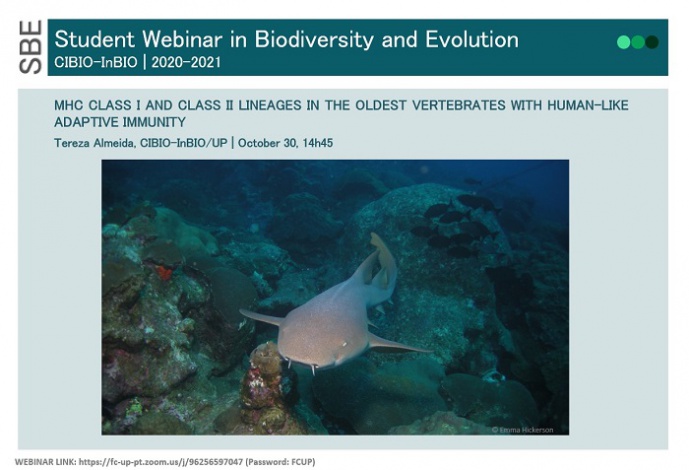MHC class I and class II lineages in the oldest vertebrates with human-like adaptive immunity

STUDENT WEBINAR IN BIODIVERSITY AND EVOLUTION
The adaptive immune system is based on the ability of lymphocytes to identify foreign antigens produced by pathogens. The Chondrichthyes (sharks, rays and chimaeras), or Cartilaginous Fishes, is the most basal vertebrate lineage possessing the basic features of the innate and adaptive immune systems present in mammals, and thus are key taxa to understand the emergence and evolution of vertebrate adaptive immunity. These species also occupy a variety of habitats and have different lifestyles, thus they are exposed to different pathogens that may rely on different immune mechanisms.
In this talk, I will present some results of my PhD project on the genetic architecture and diversity of the major histocompatibility complex (MHC) in Chondrichthyes. The MHC genes are required for adaptive immunity, specifically for the presentation of antigens to T cells. I have identified five new nonclassical MHC class I lineages (UDA, UEA, UFA, UGA and UHA) with completely different biochemical features as well as in their taxonomic distribution. UDA and UGA lineages are present across cartilaginous taxa but they occur as multicopy in Holocephali (chimaeras) and as single/low copy in Elasmobranchii (sharks and rays). UFA and UHA are found only in Elasmobranchs and show striking differences in their structural features. In turn, the UEA lineage was found exclusively in sharks (Division Selachii) and UCA is present only in dogfish sharks (Order Squaliformes). In the MHC class II genes the results showed two divergent and remarkably ancient lineages of class II genes in Elasmobranchs.
Our data demonstrate that Chondrichthyes fish already show remarkable diversity at a key immune gene family, MHC, despite their ancient origin and position at the base of jawed vertebrates.
Tereza Almeida is a 4rd-year BIODIV PhD student, working under the supervision of Ana Veríssimo (CIBIO-InBIO, UP), Pedro Esteves (CIBIO-InBIO, UP) and Martin Flajnik (School of Medicine, UMB). She graduated in Genetic and Biotechnology in the University of Trás-os-Montes e Alto Douro and holds a MSc in Comparative and Technological Molecular Genetics from the same University.
[Host: Ana Veríssimo, MARCHANGE and Pedro José Esteves, IMED]